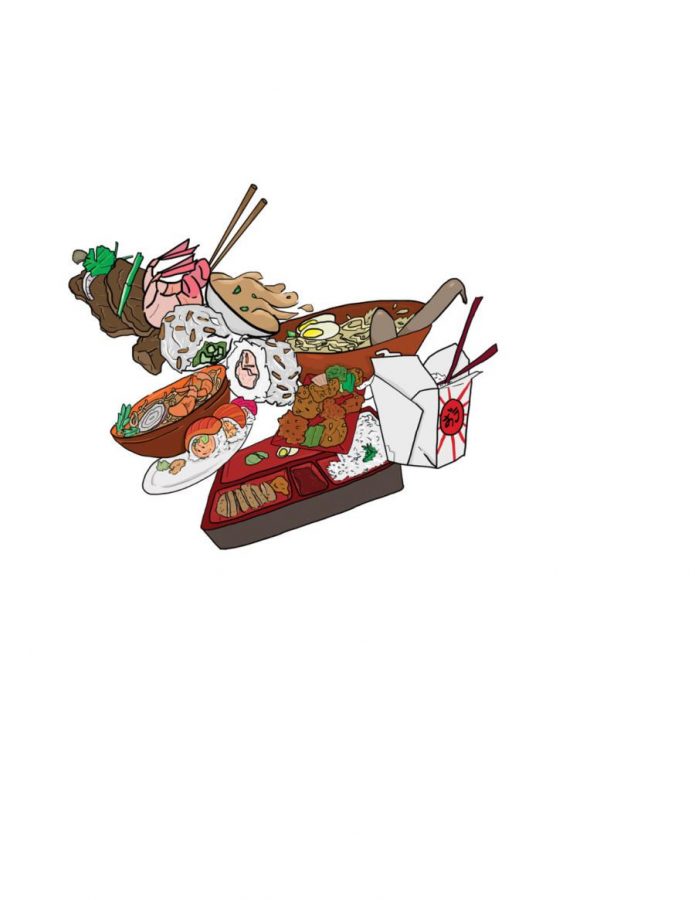Growing up, my idea of authentic Chinese cuisine was categorized based on spice factor, texture, smells, and presentation. These were the elements of my culture that brought me back to my native Hong Kong and replayed cherished moments of large family dinners in my head.
Over the years, I’ve come to understand that Chinese food in America says more about American culture and history than it does about Chinese culture. This is because when the first Chinese immigrants came to America in hopes for a better life, more opportunity, the promise of gold; and the chance to work on the Transcontinental railroad in the 1800s, they brought their woks and culture and managed to break through the forefront of American cuisine by starting small business and adapting the unique taste of their heritage to cater to the American palate.
In parts of the U.S., instead of experiencing authentic Chinese food, it’s delicious overpowering chiles and black sesame sauce, I’m forced to live with a tangy sweet and sour glaze found on chicken, beef, pork and shrimp, all next to a fortune cookie on the side.
By the way – fortune cookies do not exist in China. They were inspired by the Japanese cookie tsujiura senbei, which can still be found in some regions of Japan and was initially popularized and manufactured in both Los Angeles and San Francisco.
Honestly, when my friends, who can’t tell the difference between authentic and inauthentic Chinese food, my automatic reply to the question “Where should we eat?” is always “Anything but Asian.” If we ever went out for real Chinese food, I’d order luóbo gāo (fried radish cake) and be forced to sit through their disgusted stares and concerned faces as I indulged.
The American palate is simply not as diverse as an Asian one. However, this is more of a multi-cultural disadvantage for many Americans because China is comprised of 34 provinces that are unique and distinct in their cuisine and in their culture. When most people refer to Chinese food, they are really referring to Cantonese-style cuisine: dim sum. The reason being is that the majority of the first Chinese immigrants derived from the province of Guangdong.
China’s diverse array of cultures alone is not the only reason why Asian food is so dynamic. All of Asia can be viewed as a pool of overlapping cultures that are unique in many ways and similar in others. In China, the Sichuan province is known for its use of the Sichuan pepper, garlic, and other chiles whereas in the Fujian province the majority of dishes include different types of seafood and woodland delicacies (mushrooms, bamboo shoots, shellfish). The difference in cuisine and culture that spreads over the North, South, East and West within Chinese borders cannot be compared.
Here in the U.S., beef and broccoli, orange chicken and Top Ramen dominate the Asian food scene and can always be found in a restaurant with excessive decoration, too many paintings of Chinese concubines on the walls, and either the words panda or Hong Kong within the name. In fact, the majority of authentic Chinese restaurants have modest interior decoration, fast service, and a low sanitation rating.
Even with this said, I have been to authentic Chinese restaurants in the Bay Area such as R&G Lounge, House of Banquet and Hong Kong Lounge. However, when most Tam students crave the taste of Chinese food during lunch and most always the weekly special takeout order from Harmony, or other similar options found at Bamboo Hut, May Lee’s and Panda Express, I’m tempted to bargain with the clerks about the outrageously high prices of their meals along with critiquing other elements of their menu that blatantly expose its superficiality. But I always refrain from acting out, and I’ve learned to accept that it’s just not the homeland.


